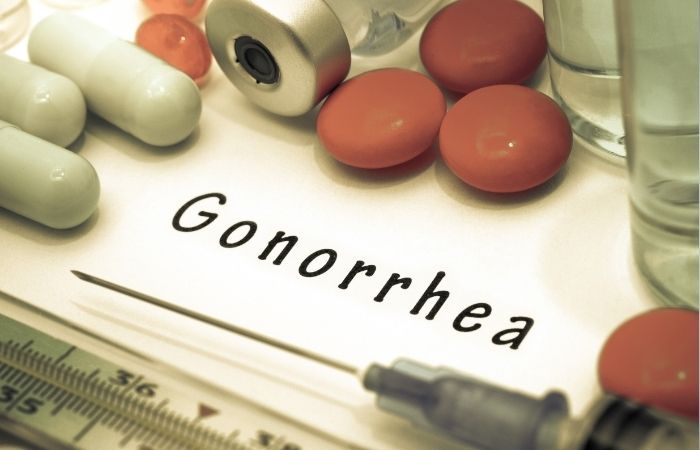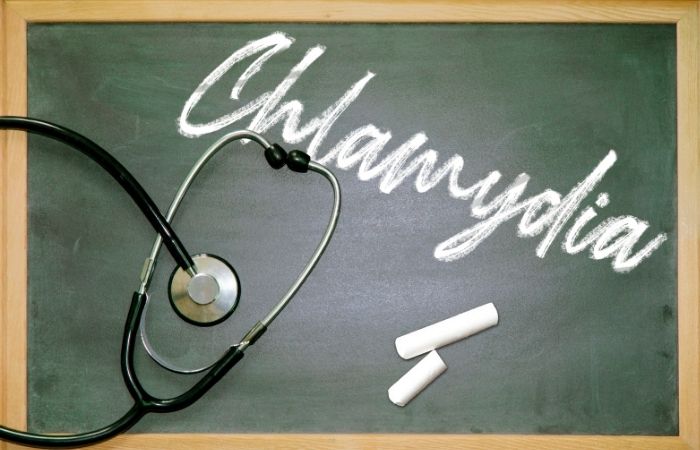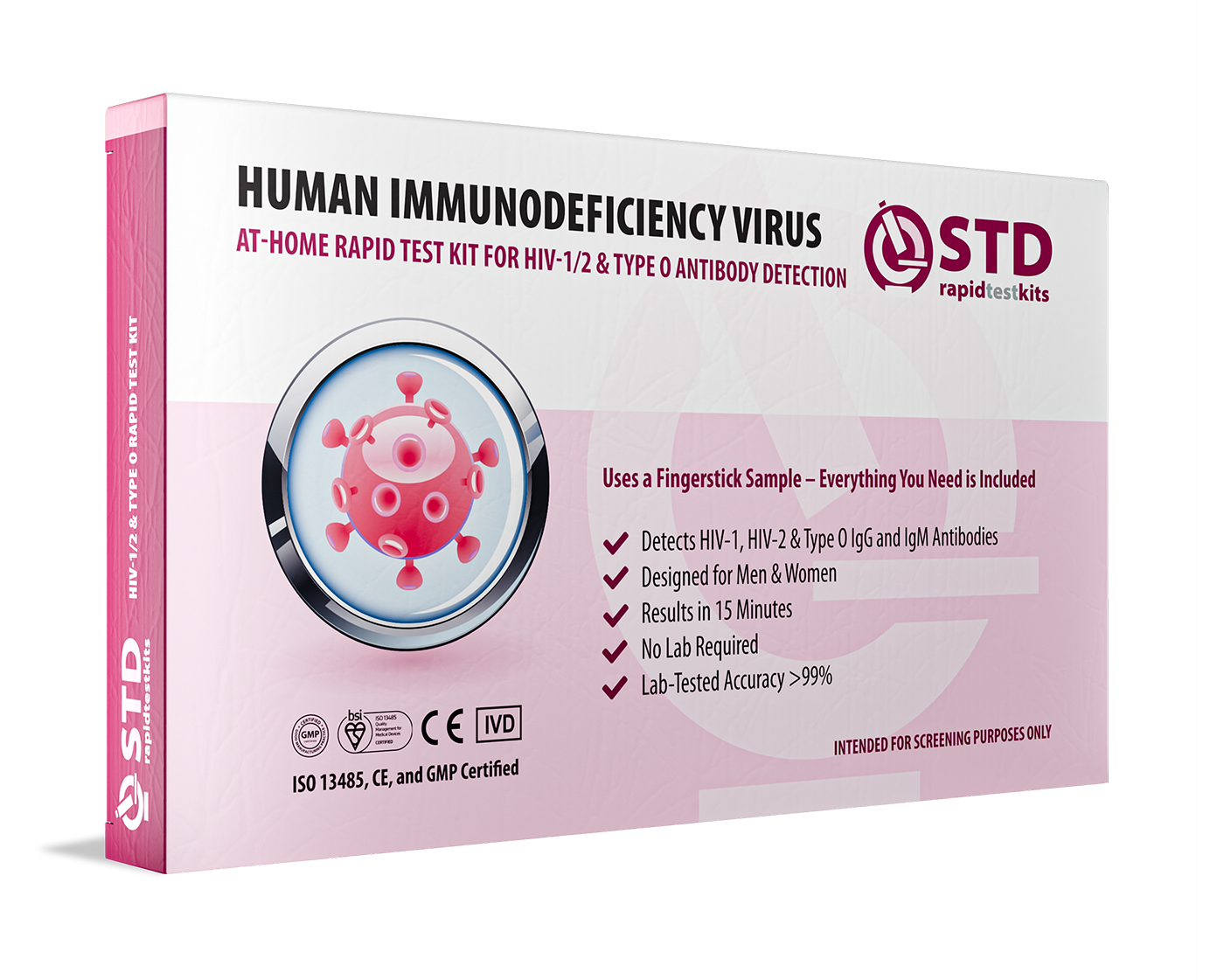Quick Answer: Yes, some STDs can transmit, or at least deposit infection, in just hours. Gonorrhea, chlamydia, and herpes can move fast given fluid exposure, skin-to-skin contact, or micro-tears. But transmission isn’t guaranteed, it takes viable organisms, receptive exposure, and timing. Knowing when to test, when to act, and how to reduce risk in the hours afterward can change outcomes.
Fluid Exposure in Under an Hour
STDs like chlamydia and gonorrhea depend on fluid exchange, genital, rectal, or oral secretions. If you have unprotected contact with infected fluid, even for a brief moment, it’s possible that enough bacteria transfer to initiate infection. Studies show a single episode of unprotected receptive anal intercourse may result in transmission within hours, though the average detectable infection takes days to weeks to appear in testing.

People are also reading: Is Your Teen at Risk? A Parent’s Guide to Teenage STDs
Herpes & HPV: Skin-to-Skin Risks Are Fast Too
Herpes and HPV don’t require fluid, they spread through skin contact. HSV viral particles can enter through micro-tears in minutes. HPV seeds basal cells quickly, and detectable infection may begin within hours of exposure. That’s why barrier use (like condoms or dental dams) matters, even for short or friction-only contact.
Why Not Everyone Gets Infected Immediately
Transmission is a probabilistic event, not a guarantee. It depends on viral or bacterial load, duration of exposure, mucosal integrity, and presence of abrasions. A short condom break may still deliver thousands of gonorrhea bacteria. A single herpes particle on a cut is enough. But for most people, actual infection, and clinical symptoms, takes days to weeks to emerge.
What You Can Do #1: Act Fast, Even Before Testing
After any risk, even just minutes or hours, you can reduce the chances of infection spreading. Flush physical fluids with water, avoid intercourse for 7 days, and seek post-exposure treatment or consultation if available (like herpes suppressive therapy or emergency antibiotics). Testing immediately isn’t helpful, but medical follow-up is smart.
Check Your STD Status in Minutes
Test at Home with RemediumGenital & Oral Herpes Test Kit

 For Men & Women
For Men & Women Results in Minutes
Results in Minutes No Lab Needed
No Lab Needed Private & Discreet
Private & DiscreetOrder Now $75.00 $98.00
For all 2 tests
What You Can Do #2: Know When to Test, Not Just Panic
Testing too soon often results in a false sense of security or unnecessary panic. Here's the realistic timeline for testing after a 24-hour risk:
- Chlamydia/Gonorrhea: Wait 5–7 days post-exposure for most accurate results (via NAAT).
- HIV: Rapid antigen/antibody combo tests become reliable at 18–45 days, with early RNA tests available from 10 days.
- Syphilis: Blood tests may take 3–6 weeks to become reactive.
- Herpes (HSV): Unless a sore develops, wait 12+ days for blood antibody testing, though many providers advise against asymptomatic screening.
Bottom line: Don't rush to test within 24 hours. Instead, mark your calendar, avoid risky contact until you’ve passed the appropriate window, and stay alert for symptoms.
One Night, One Risk: Why People Still Underestimate It
Sex-ed often gives people the impression that STDs require prolonged exposure, multiple encounters, or obvious signs. But herpes doesn’t care how romantic the moment was. Gonorrhea doesn’t need five minutes of thrusting. Infections aren’t about morality, they’re about microbiology. That one-night stand? It only takes one vulnerable surface, one missed condom, one asymptomatic carrier.
Why “I Feel Fine” Isn’t Good Enough
Many STDs are asymptomatic in their earliest, or even long-term, stages. Herpes can transmit days before a visible sore. Chlamydia can stay silent for months while damaging reproductive organs. And HPV can sit undetected for years. Feeling fine is not the same as being clear. If you've had unprotected contact within the last 24 hours, especially with someone new or untreated, assume risk and plan follow-up testing accordingly.

People are also reading: STDs in Porn: What Performers Really Do to Stay Safe
What Happens Inside the Body in the First 24 Hours?
Even when symptoms take days or weeks, the biological process starts fast. Once bacteria like Neisseria gonorrhoeae or Chlamydia trachomatis land on mucous membranes, they start colonizing epithelial cells within hours. Viruses like HSV or HPV bind to host cells almost instantly. Your immune system may slow or stop them, but if not, replication begins silently, preparing for the symptoms you won’t see until later.
Post‑Exposure Pills & Emergency Therapy: What’s Real in 24 Hours?
If you've had exposure within the last day, know this: time matters, and so does accuracy. HIV PEP (post‑exposure prophylaxis) truly works, but only if started within 72 hours, ideally within the first 24. That means prompt medical access, emergency room, urgent care, or specialized community clinics, is critical for prevention.
For bacterial STDs like chlamydia or gonorrhea, there is no universally accepted "PEP" equivalent. However, expedited partner therapy (EPT) may be prescribed in cases where there's known exposure or public health outreach, especially in high-risk communities. This means prescribing partners treatment without clinical visit, but it's not foolproof or universally available.
Important caveat: emergency antibiotics aren’t a substitute for testing, safe sex, or regular health care. They're designed for high-risk exposure scenarios, not as a first response to anxiety or uncertainty.
Symptoms That Can Show in 24–72 Hours: What to Watch (And What to Ignore)
Though most STIs take days or weeks to test positive, some symptoms can emerge early. Here’s what might appear quickly:
- Gonorrhea: Men may start to feel burning or discharge in the urethra within 48 to 72 hours. Women may not notice symptoms for a while.
- Chlamydia: Most of the time, it doesn't cause any symptoms, but some people may notice mild itching or pain when they urinate within a few days.
- Herpes (HSV): You might feel tingling, redness, or pain at the site of contact with herpes (HSV) within 1 to 3 days, before sores show up.
- HPV:: At first, it is almost always slow and has no symptoms. Warts and other visible symptoms may not show up for weeks or months.
But keep in mind that early symptoms often show up because of things that happened earlier, not necessarily the one you're focusing on. Don't think of them as statements; think of them as signals.
Check Your STD Status in Minutes
Test at Home with RemediumHIV Rapid Test Kit

 For Men & Women
For Men & Women Results in Minutes
Results in Minutes No Lab Needed
No Lab Needed Private & Discreet
Private & DiscreetOrder Now $33.99 $49.00
Why “It Only Lasted a Few Minutes” Doesn’t Keep You Safe
A pervasive misconception suggests that brief or light contact, “it was just a quick kiss” or “barely any fluid”, means low risk. But STDs don't calculate duration. A single moment of skin-to-skin contact, or one condom slip, can transmit infection if the conditions align.
Many viral particles or bacteria require only micro-tears or mucosal exposure. We don’t track seconds, they track contact. There's no scientifically validated "gray zone" where exposure is too brief to pose real risk.
Dealing with Anxiety: The 24-Hour Stress Loop
If you feel yourself spiraling, counting minutes since exposure, Googling symptoms, or assuming the worst, there are tools that help:
- Write down your timeline: exposure time, what happened, or what went wrong.
- Mark key future testing dates in your calendar (e.g., day 7, 14, and 45).
- Avoid sex until the initial high-risk window has passed.
- Order discreet at-home testing kits, especially if you don't have safe clinic access.
- Take a break from symptom-checking. Breathwork, journaling, or a friend you can message with might defuse the fixations.
This isn't panic, it’s process. Planning means grounding your fear into action, and giving your future self clarity. It’s not about being safe, it’s about being smart.
So, How Fast Can You Actually Catch an STD?
Here’s the truth: transmission can begin the second exposure happens. Whether or not you test positive immediately is a different story. Bacteria and viruses don’t wait, they invade mucosal linings, replicate in host cells, and start spreading silently. What varies is when the body reacts and when tests can detect the infection.
If you might be exposed within the next 24 hours, take it seriously but also plan ahead. Find out what you need to know, make plans for follow-up tests, and keep an eye out for symptoms. Timing is the first step in preventing something, and action is the last step. That time of doubt doesn't have to turn into a time of regret. Don't plan your panic; plan your next move.

People are also reading: STDs in Men: Symptoms Most Guys Miss
Alcohol, Trauma, and Decision Speed: When Risk Gets Fast-Tracked
Alcohol or drug use can lower your guard and speed up risky behavior, turning a possibly safe moment into an immediate exposure. Impaired awareness may mean misjudging condom breaks, ignoring condoms altogether, or pushing boundaries you’d usually respect. Trauma, too, can distort timelines, making it harder to remember consent, exposure time, or whether anything “felt safe.” In these cases, the 24‑hour window isn’t abstract, t’s intense: decisions made, precautions skipped, and uncertainty left lingering.
Microtears & Message Delivery: Why Skin Integrity Matters
Tiny, invisible abrasions, microtears, are one of the biggest vulnerability points for transmission within hours. These can happen from dry sex, vigorous rubbing, friction, or poorly-fitted condoms. Even small tears in your partner’s mucosa or your own thighs can become doors for bacteria or viruses. These aren’t dramatic injuries. Most aren’t felt. And that’s exactly why they’re dangerous, because they turn ordinary contact into high-risk exposure.
Why “Safe” Doesn’t Mean Totally Safe, Especially Early On
Barrier method use lowers risk, yes, but it doesn’t eliminate it completely. Condoms only protect the areas they cover. HPV or herpes on uncovered skin can still transmit. And late application, putting on a condom mid-act instead of before penetration, can let fluid slip. The 24‑hour window isn’t a green light the next morning. Early friction, condom removal, missed lubricant, micro-tears, all can quietly undermine “safe” spaces.
Check Your STD Status in Minutes
Test at Home with Remedium3-in-1 STD Test Kit

 For Men & Women
For Men & Women Results in Minutes
Results in Minutes No Lab Needed
No Lab Needed Private & Discreet
Private & DiscreetOrder Now $69.00 $147.00
For all 3 tests
FAQs
1. Is it possible to get an STD within a day of being exposed?
Yes. Symptoms or positive test results may not show up for days or weeks, but the disease can be spread right away after being exposed.
2. Is it possible for me to test the next day and be sure?
No. Most STDs won't show up on tests for a few days. It usually takes at least 5–7 days for HIV, chlamydia, and gonorrhea to show up. For syphilis and herpes, it can take even longer.
3. What can I do right away after a risky encounter?
Yes, if you are eligible, get HIV PEP within 72 hours. Don't have any more sexual contact, and think about seeing a doctor early for advice and help with planning your care.
4. What should I look for in the first few days?
Itching, redness, burning when you pee, or sores that aren't too bad. But a lot of STDs don't show any signs at first, so don't just look for them.
5. Is it possible to get an STD within 24 hours of kissing someone?
Yes, for some infections, like oral herpes (HSV-1) or syphilis, if there are sores or cuts that are still open.
6. Do condoms always stop STDs?
They lower the risk a lot, but they don't cover all exposed areas. Infections that spread from skin to skin, like herpes and HPV, can still happen.
7. How good are home tests at finding things early?
Very accurate if used at the right time. NAAT tests for chlamydia and gonorrhea are most accurate about seven days after exposure.
8. Should I tell my partner about a scare that lasted 24 hours?
Open communication is important if you both took on some risk. Putting it in terms of caring for each other, "Let's test together," can help people trust each other and lower the stigma.
9. Do STDs look different depending on which body part is exposed?
Yes. Oral sex can give you throat infections, anal sex can give you STDs in the rectum, and vaginal sex has its own risks. The kind of exposure should match the test.
10. What if I can't get to a clinic?
STD Rapid Test Kits lets you test yourself at home in a private and accurate way. No waiting rooms, no judgment, just quick answers.
Knowledge and Timing Are Your Best Defenses
If there’s one truth about the 24‑hour window, it’s this: transmission isn’t about shame, t’s about timing. While infection can begin within minutes, testing takes time, and fear doesn’t help. The best move isn’t panicking, t’s plotting. Mark your test windows, pause sexual activity, seek post-exposure advice if needed, and stay grounded in facts.
Layoffs in stigma don’t happen overnight, but grounded knowledge does. By recognizing how fast fluid, friction, or viral particles can act, you equip yourself to act too. This isn’t about predicting doom, t’s about having a plan. From exposure to clarity, that window becomes your opportunity, not your regret.
Sources:
1. AVERT: Post-Exposure Prophylaxis (PEP) Overview
2. Incubation Periods of Common STIs – Verywell Health
3. How Long Does It Take for an STD to Show Up? – Medical News Today










